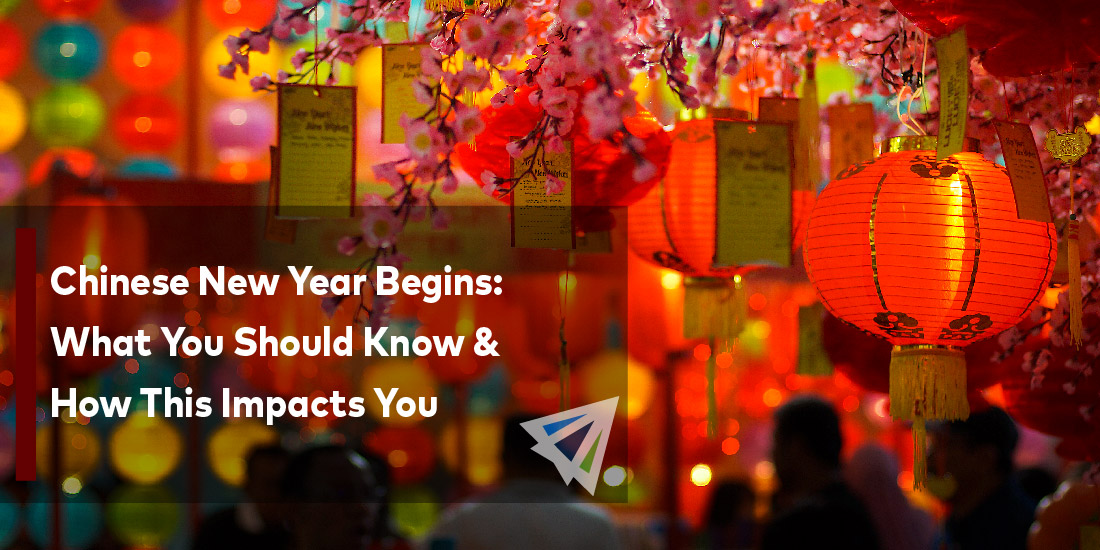Chinese New Year Begins: What You Should Know & How This Impacts You
Consistency and predictability are two words you will never hear when shipping during Chinese New Year. It’s well known amongst any international shippers that Chinese New Year brings uncertainty, price changes, delays, logistical challenges, and plenty of other issues. After all, carriers get incredibly bogged down, capacity is short, and everyone is operating at 110 percent. All things considered, this is not necessarily a recipe for smooth sailing.
Chinese New Year: What to Expect for Shipping
Before Omicron came into the picture, the general assumption amongst the public was that things were on the upswing. The worst was behind us, and we can continue forward with confidence that things will only get better. Unfortunately, it’s not looking like that will be the case. China’s response to Omicron has shippers expecting complications. In addition, Lunar New Year and the Winter Olympics in Beijing could further complicate things in relation to COVID.
Lockdowns Are Happening
We were all hoping that lockdowns would be a thing of the past, however, with China’s “zero-tolerance” policies related to COVID, you better believe there are already lockdowns happening in several areas, including Tianjin. Additionally, Shenzhen has put control measures into place (although they haven’t yet gone into a full lockdown).
These lockdowns concern shippers, as several sellers and production facilities are affected by the COVID response in China. Lockdowns place a major bottleneck on the manufacturing, supplying, and throughput of goods.
Delays
Delays have been a part of the international shipping picture for quite some time at this point. Although cargo isn’t coming to a standstill like it did at the beginning of the pandemic, the movement of goods from China to the U.S. is slowing down due to recent lockdowns, control measures, and congestion.
Congestion at the southern Californian ports, where most Chinese goods to the U.S. are imported through, continues to be severe. However, this congestion exists apart from the issues seen on China’s side. When China’s operations are fully restored as COVID regulations are loosened, it’s expected to apply a whole new level of pressure on U.S. ports as more vessels will be dispatched from China.
Increased Prices
Prices are directly correlated to supply and demand. That said, as congestion begins to pile up, pressure on U.S. ports increases. As more vessels are being dispatched, prices will be driven upwards (potentially quite a bit). Realistic assumptions on how long it will take to reduce the backlogs of containers put the estimated price evaluations to stay for roughly 18-24 months.
Olympics
We all know that Chinese New Year causes disruptions in the supply chain because of increased demand and local Chinese businesses closing for up to a week. However, the real culprit expected to cause issues this year is the Winter Olympics.
The Lunar New Year is happening January 31st through February 1st, and the Olympics begin on February 4th through February 20th. Due to China’s strict handling of COVID cases and spread, it is highly likely that lockdowns will ensue. With the sheer volume of people who will be a part of the event, it’s nearly impossible to prevent some level of COVID spread.
The issue with this is that these potential lockdowns will be coming immediately after the Lunar New Year, creating an extended period of strenuous bottlenecks in the logistics chain. Of course, these assumptions remain theoretical in the meantime, but shippers should be prepared for the worst.
In Summary
The outlook for logistics in China in the coming several weeks isn’t looking great. The Lunar New Year and Winters Olympics in Beijing stacked on top of China’s severe COVID regulations are a recipe for complications. Shippers may be forced to wait through long supplier or cargo delays as China wrestles Omicron lockdowns and control management. This comes all while the U.S. continues efforts to alleviate congestion at southern Californian ports, where most Chinese cargo is routed through.
If you have any questions about the state of your cargo, what you can do right now, and how to mitigate risk in the coming weeks, don’t hesitate to just reach out to one of our team members! We would love to answer all your questions and help your team in any way possible.
